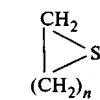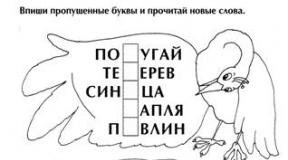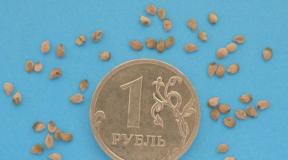VAT to be deducted in 8.3. Document Reflection of data for deduction
The entry “VAT accepted for deduction” allows you to reduce the amount of VAT to be transferred to the budget. Therefore, it is important for an accountant to know what such an entry should look like and at what point it should be made. We will talk about this in our article.
Briefly about the pair 68 and 19
In accordance with the Chart of Accounts, approved. By order of the Ministry of Finance of the Russian Federation dated October 31, 2000 No. 94n, 2 accounts are used to calculate VAT:
- 68 — Calculations for taxes and fees;
- 19 — Value added tax on purchased assets.
Account 68 is needed to summarize data on calculations of taxes and fees that the organization pays to the budget.
On loan account 68, the organization calculates the amount of VAT payable to the budget. However, this amount can be reduced by the amount of “input” VAT on purchased goods (works, services). To reduce the accrued VAT, an entry must be made to the debit of the account. 68.
Account 19 is intended to accumulate data on the amounts of “input” VAT on purchased goods (works, services). Moreover, we can talk about both amounts already paid and those to be paid.
For information on which balance sheet lines reflect VAT, see our material “How is VAT reflected in the balance sheet?”
Posting “VAT accepted for deduction”
To reflect “input” VAT on goods, services received, work performed or acquired property rights, the following entry is used:
Dt 19 Kt 60.
And if VAT is accepted for deduction, the posting looks like this:
Dt 68 Kt 19.
At the end of the reporting period, the balance on account 68 reflects the amount of the organization's debt for the corresponding tax to the budget.
When can the entry “VAT accepted for deduction” be made?
In order to make an accounting entry for deducting VAT, the conditions for such a deduction must be met.
In accordance with the provisions of Art. 171 and 172 of the Tax Code of the Russian Federation, the right to deduct “input” VAT appears when several conditions are simultaneously met:
- Purchased goods (services or works) and property rights are intended for participation in transactions that are subject to VAT (Article 171 of the Tax Code of the Russian Federation).
- Goods (services or work) that were purchased by the taxpayer were registered by him (Article 172 of the Tax Code of the Russian Federation).
- There is a correctly executed invoice.
If the above conditions are met, the accountant records VAT for deduction by making an entry in the accounting records:
Dt 68 Kt 19.
Such an entry is legal regardless of whether the “input” VAT was transferred to the supplier/performer or not. After all, according to the general rules, paying tax is not a condition for accepting it as a deduction.
Results
The acceptance of VAT for deduction is reflected by posting Dt 68 VAT subaccount Kt 19. The basis for such an entry is a correctly completed invoice issued by the supplier of goods or services.
Almost everyone knows what VAT is, but not many know what deductible VAT is! This phrase should be understood as the ability of any taxpayer of this contribution to reduce the amount of tax payable. This can be achieved by purchasing goods and services from your suppliers or partners.
All invoices and certificates of services performed from the same value added tax payer can significantly reduce the base. The more such expenses you receive per month, the less you will pay into the budget.
Basic entries for VAT deduction
- When purchasing goods or work from a supplier. This also includes barter transactions.
- The amount that was withheld upon import into the Russian Federation.
- The amount that was withheld during the purchase by sales agents.
- The amount previously transferred to the treasury as VAT from the sale of one’s goods, if the time has come for its return.
- The amount of construction or installation work performed for personal use.
- The amount presented by contractors when carrying out major repairs, completing OS, purchasing products for work.
- Amount from the acquisition of an unfinished construction project.
- Amount of paid business trips.
- The amount that was transferred to the supplier for the expected goods.
- Amount of advance payments from the supplier.
Postings if VAT is accepted for deduction:
| Account Dt | Kt account | Wiring Description | Transaction amount | A document base |
| Transfer of advance payments to suppliers, including VAT | Advance amount including VAT | Payment order, bank statement | ||
| Acceptance of VAT deduction from advance payment to supplier | VAT amount | Invoice | ||
| Purchasing goods from a supplier without VAT | Total amount excluding VAT | Invoice | ||
| 60.1 | Allocation of VAT on purchased products | VAT amount | Invoice | |
| VAT on goods from the supplier is sent for deduction | VAT amount | Accounting certificate-calculation | ||
To reflect VAT amounts in 1C 8.3 with a manual or simplified method of maintaining VAT accounting, use the document “Reflection of VAT for deduction”.
Let's look at an example of using this document together with the document “Entering balances”. Let’s assume that at the beginning of 2016, the organization Romashka LLC has a credit balance with the counterparty Servicelog. The invoice for the purchased goods was received only in January of the following year.”
To reflect this situation in 1C Accounting, we will introduce the document “Entering balances” (Fig. 1). We will use the virtual object “Document of settlements with the counterparty” as a settlement document.
In the transactions, instead of the invoice, a settlement document is indicated (Fig. 2).
Receiving an invoice from a supplier entitles you to a VAT deduction. To reflect this possibility in the 1C program, we will create a document “Reflection of VAT for deduction” (Fig. 3) and register the supplier’s invoice in it.
Get 267 video lessons on 1C for free:
On the “Goods and Services” tab, fill in the required columns. In this case, it is not necessary to fill out the entire list of nomenclature (Fig. 4); it is enough to indicate the type of value.
Since the “Generate transactions” and “Use as a purchase book entry” checkboxes are enabled in the 1C document settings, movements in the accounting register and “VAT purchases” will be generated (Fig. 5).
Partial deductions are often used by companies to avoid desk tax audits in a situation where VAT is asked to be claimed for refund during the tax period. It is more profitable for the company to break such a deduction into parts. However, when claiming a deduction in parts on one invoice, questions may arise regarding filling out the purchase ledger. Let's look at the filling mechanism and also point out possible tax risks.
As is known, deductions are subject to VAT amounts presented to the taxpayer when purchasing goods in the territory of the Russian Federation or paid when importing goods into the territory of the Russian Federation, in the case of using these goods to carry out operations subject to VAT (resale of goods refers to such operations) after they are registered with the Russian Federation. based on invoices (clause 2 of article 171 and clause 1 of article 172 of the Tax Code of the Russian Federation).
From January 1, 2015, clause 11 of Art. 172 of the Tax Code of the Russian Federation, which indicates that the VAT provided for in paragraph 2 of Art. 171 of the Tax Code of the Russian Federation, can be claimed for deduction within three years after registration of goods (works, services), property rights or goods imported into the territory of the Russian Federation.
Tax legislation does not prohibit the deduction of VAT in installments.
The Russian Ministry of Finance agrees with this. Thus, in a letter dated April 9, 2015 No. 03-07-11/20293, the financial department noted that the deduction of VAT on the basis of one invoice in parts in different tax periods within three years after the registration of goods (works, services), with the exception of fixed assets, equipment for installation and (or) intangible assets, does not contradict the norms of the Tax Code of the Russian Federation.
How is it necessary to fill out a purchase book in such a situation?
The rules for filling out the purchase book used in calculations of value added tax (hereinafter referred to as the Rules for filling out the purchase book) were approved by Decree of the Government of the Russian Federation of December 26, 2011 No. 1137.
Subclause “t” of clause 6 of the Rules for filling out the purchase book stipulates that in column 15 of the purchase book it is indicated the cost of goods (work, services), property rights, indicated in column 9 in the “Total payable” line of the invoice, and in the case of transferring the amount of payment, partial payment for upcoming deliveries of goods (performance of work, provision of services), transfer of property rights - the transferred amount of payment, partial payment on the invoice, including value added tax.
Clause 5 of the Rules for compiling an invoice used in calculations for value added tax, in turn, stipulates that the line “Total payable” is filled in to compile a purchase book, a sales book, and in cases provided for in Appendices No. 4 and 5 to Decree of the Government of the Russian Federation of December 26, 2011 No. 1137, - for compiling additional sheets for purchase books and sales books.
Thus, the data from column 9 on the “Total payable” line of the invoice is transferred to column 15 of the purchase book.
There are no exceptions for cases of partial deduction of VAT when filling out column 15 of the purchase book. The Rules for filling out the purchase book are not provided.
Thus, following the literal reading of the above sub. “t” clause 6 of the Rules for filling out the purchase book, in case of a partial deduction, in column 15 of the purchase book, you should reflect the entire cost of goods (work, services), which is indicated in the corresponding invoice in column 9 in the line “Total payable”.
A taxpayer who has reflected the cost of goods only in the part claimed for deduction of VAT must be prepared for certain tax risks. Let's evaluate them to see if they are negative for the taxpayer.
Assessment of the risk of refusal by tax authorities to deduct VAT
The purchase book is not provided for in paragraph 1 of Art. 172 of the Tax Code of the Russian Federation as a basis for accepting tax as a deduction; accordingly, the right to tax deductions is not related to the correctness of its completion. This position is confirmed by extensive judicial practice (see, for example, Resolutions of the Federal Antimonopoly Service of the Ural District dated April 18, 2013 No. F09-3460/13 in case No. A47-8212/2012, FAS Volga District dated February 12, 2013 in case No. A65 -14995/2012, FAS Moscow District dated January 17, 2013 in case No. A40-40046/12-99-216).
Assessment of the risk of prosecution under Art. 120 of the Tax Code of the Russian Federation for violation of the rules for filling out the purchase book
Article 120 of the Tax Code of the Russian Federation establishes liability for gross violation of the rules for accounting for income and (or) expenses and (or) objects of taxation. For the purposes of this article, such a violation means the absence of primary documents or the absence of invoices or accounting or tax accounting registers, systematic (two or more times during a calendar year) untimely or incorrect reflection in accounting accounts, in tax accounting registers and in reporting of business transactions, cash, tangible assets, intangible assets and financial investments.
The purchase book used in VAT calculations, among the documents named in Art. 120 of the Tax Code of the Russian Federation, not mentioned.
Let's consider whether the purchase book can be classified as tax accounting registers.
The concept of “tax accounting register” is found in Chapter 23 “Tax on personal income” of the Tax Code of the Russian Federation. So, in accordance with paragraph 1 of Art. 230 of the Code, tax agents maintain tax deductions received from them by individuals during the tax period, tax deductions provided to individuals, calculated and withheld taxes in tax registers.
Also, the concept of “tax accounting register” is disclosed in Chapter 25 “Organizational Income Tax” of the Tax Code of the Russian Federation. According to Art. 313 of the Code, if the accounting registers contain insufficient information to determine the tax base, the person has the right to independently supplement the applicable accounting registers with details, thereby forming tax accounting registers, or maintain independent tax accounting registers.
However, for the purposes of calculating VAT, the obligation to maintain tax registers is not established. At the same time, neither the Tax Code of the Russian Federation nor the Decree of the Government of the Russian Federation No. 1137 mentions the purchase book as a tax register.
In addition, clause 4 of the Procedure for filling out a tax return for value added tax, approved by order of the Federal Tax Service of Russia dated October 29, 2014 No. ММВ-7-3/558@, states that the declaration is drawn up on the basis of sales books, purchase books and data from the accounting registers of the taxpayer (tax agent), and in cases established by the Tax Code of the Russian Federation, on the basis of data from the tax accounting registers of the taxpayer (tax agent).
Thus, as follows from the above norm, the Federal Tax Service of Russia separates the concepts of “purchase book” and “tax accounting register”.
From the foregoing it follows that there are no grounds for holding the taxpayer liable for improper maintenance of the purchase ledger.
However, there is another point of view on this issue. Thus, the Federal Antimonopoly Service of the Moscow District, in Resolution No. F05-15210/2013 of November 29, 2013, indicated that the purchase book and sales book are not primary documents used to record the relevant transactions, but are in fact tax accounting registers, the data of which is formed on the basis primary documents.
However, in this case, the court did not consider the issue of holding the taxpayer liable for taxation, but pointed to the duty of the tax authority to check the books of purchases and sales and primary documents.
Regarding disputes regarding the application of Art. 120 of the Tax Code of the Russian Federation, if the rules for maintaining a purchase book are violated, then the courts make positive decisions for the taxpayer (see, for example, Resolutions of the FAS Volga-Vyatka District dated June 30, 2006 in case No. A79-15564/2005, FAS North-Western District dated May 31, 2006 in case No. A56-22693/2005).
Let us note that the practice on this issue relates to the period of 2006 and earlier. The author has not found any more recent arbitration practice. This may indicate that the tax authorities do not make claims if facts are revealed that indicate a violation of the rules for maintaining a purchase ledger.
Thus, the likelihood of bringing the taxpayer to liability under Art. 120 of the Tax Code of the Russian Federation for incorrectly filling out column 15 in the purchase book is assessed below the average level.
Assessing the risk of being held accountable for errors in a tax return
The VAT return is submitted in accordance with the form and format approved by Order of the Federal Tax Service of Russia dated October 29, 2014 No. ММВ-7-3/558@. The declaration form also contains Section 8, which reflects information from the purchase book.
Line 170 of Section 8 of the VAT return indicates the data of the purchase book reflected in column 15. Accordingly, if column 15 of the purchase book is filled out in part of the claimed deduction, line 170 of the taxpayer’s declaration will reflect the cost of goods (work, services) only in part.
At the same time, in Section 9, line 160 of the counterparty’s declaration, the cost of goods (work, services) must be reflected in full, since partial payment of VAT is not provided for by law.
Thus, in the case under consideration, the tax authority, when comparing the data from the taxpayer’s declaration and the counterparty’s declaration, may come to the conclusion that there was an error when filling out the tax return.
The Tax Code of the Russian Federation does not provide for separate sanctions for errors when filling out a tax return. It is not specified in Article 120 of the Tax Code of the Russian Federation.
Consequently, for errors when filling out a tax return that do not lead to incomplete payment of tax, tax liability is not provided (see Resolution of the Federal Antimonopoly Service of the North-Western District dated November 19, 2007 in case No. A42-3678/2006).
At the same time, we note that on the basis of clause 3 of Art. 88 of the Tax Code of the Russian Federation, if a desk audit reveals errors in the tax return (calculation) and (or) contradictions between the information contained in the submitted documents, or discrepancies are identified between the information provided by the taxpayer and the information contained in the documents available to the tax authority and received by it during tax control, the taxpayer is informed about this with the requirement to provide the necessary explanations within five days or make appropriate corrections within the prescribed period.
Thus, when comparing the data of the taxpayer’s declaration and the counterparty’s declaration, the tax authority may identify errors, which will entail the need to provide explanations.
So, we emphasize once again that in case of a partial deduction, in column 15 of the purchase book, you should reflect the entire cost of goods (work, services), which is indicated in the corresponding invoice in column 9 in the line “Total payable”.
If the taxpayer has filled out column 15 of the purchase book regarding the claimed deduction, the risks of refusal to deduct VAT, as well as the risks of being held liable under Art. 120 of the Tax Code of the Russian Federation for incorrect registration of the purchase book and errors in the tax return are low.
For example, we use counterparties:

It is proposed to carry out a VAT audit in the following order:
- Check the reflection in the receipt documents of the amount of “input” VAT and the completeness of the reflection of invoices from suppliers.
- Analysis of account balance 19.
- Check the amount of VAT to be deducted upon receipt of goods and services according to accounting records and according to NU.
- Check the correctness of VAT reflection in the purchase book with VAT included in accounting.
Features of filling out the document “Receipt of goods and services”
- In the column % VAT– VAT rate established for each product item.
- In the column VAT amount– calculated VAT amount. Calculated automatically if a bet is set. It is necessary to control the filling of this column;
- In the column VAT invoice– account 19.03. Set automatically if a VAT account is defined in the register for the item item Item accounting accounts on the menu Company – Goods (materials, products, services):

Features of filling out the document “Invoice received”
Register "input" Invoice you can click on the hyperlink Enter invoice in the document;
In the window that appears Invoice received document fields are automatically filled with information from the document Receipt of goods and services. Therefore, you should check and supplement them:
- Invoice type – set to “For receipt”;
- lines Input number And from– enter the number, day, month and year of the received invoice from the supplier;
- Operation type code– “01” is entered, this value is used incl. upon receipt of materials ;
- checkbox Display method is affixed depending on the method of issuing the invoice - in paper form or in the form of an electronic document;
- checkbox Show VAT deduction is placed when VAT is accepted for deduction during document posting Invoice received, if all conditions for this are met:

If the invoice in 1C 8.2 is not registered properly, then an entry in the purchase book will not be generated. Posting document Invoice received does not create, but only generates a record in .
Postings generated upon receipt of goods and services in 1C 8.2
Postings generated by the document receipt of goods and services for accounting
Postings for accounting for “input” VAT in 1C 8.2 are created by the document Receipt of goods and services:

Postings generated by the document receipt of goods and services for tax accounting
The following entries were created in the VAT accumulation register:
- Recording with motion view Coming in the register VAT presented- event Presented by the VAT supplier. This entry is a potential purchase ledger entry:

- Recording with motion view Coming in the register VAT on purchased assets, type of value Materials – for tax amounts accepted for accounting related to a specific batch of inventory items:

How to fill out a purchase book to accept VAT for deduction in 1C 8.2
Creating and filling out the document “Creating purchase ledger entries”
- The document is created through the menu section: Purchase - then select Maintaining a purchase ledger – Generating purchase ledger entries;
- When reflecting in the book of purchases received Invoices a tab is filled in for goods (works, services) received from suppliers VAT deduction on purchased assets. To refill only one bookmark, you can click the button <Заполнить> directly on the bookmark, then the data in other bookmarks will not be changed:

Postings for “input” VAT for deduction in accounting
When included in a document Generating purchase ledger entries records of “input” VAT for deduction on transactions of receipt of goods (work, services), entries are created for debit 68.02: Dt 68.02 Kt 19 – for the amount of “input” VAT accepted for deduction:

Postings for “input” VAT for tax accounting deduction
The following entries were created in the VAT accumulation registers:
- in the register VAT presented with a view of movement Consumption.P The “input” VAT is written off from the register at the time it is included in the purchase book:

- in the register VAT Purchases, which generates report lines Book of purchases:

Checking the calculation of “input” VAT claimed for deduction in 1C 8.2
Step 1. Check the reflection of VAT for deduction in 1C 8.2 and the completeness of the reflection of invoices from suppliers
A common mistake is that the document Receipt of goods and services VAT amount is not included. This leads to underpayment of income tax and loss of VAT deduction. One method for identifying such an error is to generate a report Report on the availability of invoices on the menu Purchase – Maintaining a purchase book). If in the column Invoice there is no document, this means that Invoice not registered properly.
Step 2. Close account 19 “VAT on purchased assets” in 1C 8.2
As a rule, if all the conditions for submitting “input” VAT are met, then there should be no balance left on account 19 at the end of the tax period. To check whether all “input” invoices are included in the purchase book properly, you can create Turnover balance sheet for each subaccount to account 19 in the context of counterparties and receipt documents.
Let's check the data using our example. There is no balance on account 19 at the end of the period. All conditions for crediting “input” VAT in our case are met:

Step 3. Check the reflection of the amount of VAT to be deducted in 1C 8.2 when purchasing goods and equipment according to accounting records and according to NU
It is advisable to compare the reflection of VAT deductible in accounting with VAT deductible in NU.
Reflection of VAT for deduction in accounting
In postings according to BU amount of “input” VAT reflected - Dt 68.02 Kt 19 - for the amount of VAT accepted for deduction. To calculate the amount of VAT accepted for deduction when purchasing goods and services, we will create 68.02 in the menu Reports- Further Account analysis:

Reflection of VAT for deduction in tax accounting
The amount of VAT included in the purchase book according to NU is reflected in the accumulation register VAT Purchases(menu Reports– Others– List\crosstab– accounting section VAT Purchases). To obtain the VAT amount included in the purchase book for purchased goods and services, you need to set up a report. Button Settings – Bookmark Selection:
- in field Type of value select value Materials;
- in field Type of value select value Goods;
- in the Type of value field, select the value Other works and services, etc.;
From our example, VAT according to accounting = VAT according to NU = 68,247.45 rubles.
Step 4. Check the correctness of VAT reflection in the purchase book with VAT credited to accounting
The tax accounting register in which the “input” VAT is taken into account is Book of purchases. Printable form Purchase books created in the Purchase menu → further Maintain a purchase book → and select Book shopping. The accounting register in which information on VAT calculation is collected is score 68.02.
Let's check the data using our example:
- VAT according to accounting – Dt turnover 68.02 = 147,264.40 rubles.
- VAT according to NU – Purchase book = RUB 147,264.40.
- No deviation
- The calculation of “input” VAT for the period was performed correctly.
The summary of data for calculating “input” VAT can be presented in the form of an “internal” table:



















